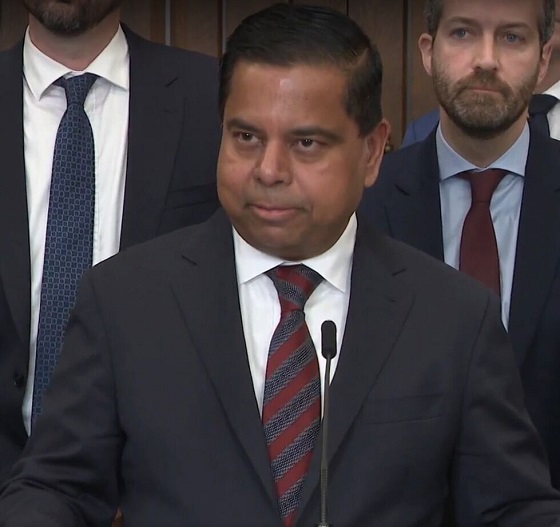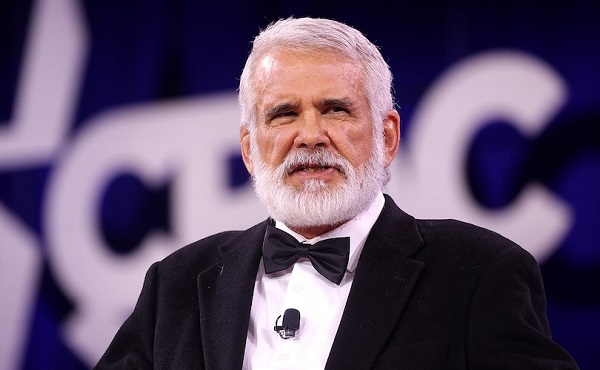Economy
Carney’s Promise of Expediting Resource Projects Feels Like a Modern Version of the Wicked Stepmother from Disney’s Cinderella

From Energy Now
By Tammy Nemeth
Canada’s ongoing saga around interminable delays for infrastructure and resource development has not necessarily improved under Mark Carney’s Liberal government. Hopes were raised in oil, gas, and mining boardrooms with the seemingly sensible words coming from Natural Resources Minister Tim Hodgson and Prime Minister Carney himself about expediting projects and developing Canada as a (clean) and conventional energy superpower. But that “clean” part is usually whispered like a corporate secret, possibly in the hope that Alberta and others won’t notice. This situation feels like a modern version of Cinderella, where promises come from the wicked stepmother with impossible conditions: The big “IF”.
In Disney’s 1950 animated film Cinderella, there is a scene where Cinderella presents an invitation to the royal ball to her stepmother, Lady Tremaine. Despite Cinderella’s eligibility, Lady Tremaine imposes a condition: She may attend only IF she completes an overwhelming list of chores. This disingenuous offer, cloaked in fairness, ensures Cinderella’s exclusion, much to the delight of her jealous stepsisters. Similarly, Canada’s resource development process appears to promise opportunity while imposing conditions that may prove unattainable.
The premiers from all the provinces were invited by the Prime Minister to come cap-in-hand with a list of projects they feel are in the “national interest”. Some suggested it was like giving a business pitch to the panel at Dragon’s Den. Hardly an appropriate situation to be in for the First Ministers of the Federation. It is a revealing indication of how far the consideration of the Premiers has fallen in the esteem of Ottawa and its media mouthpieces. Nevertheless, the Premiers duly arrived in Saskatoon to have a conversation about Ottawa’s ambitions for Canadian resource and industrial development and presented their list of projects. Most left the meeting hoping for the best.
Later that day, Prime Minister Carney released his criteria for acceptable projects, which are quite vague—the devil is always in the details. From the Prime Minister’s website:
“As a first step, First Ministers discussed projects of national interest which fit the following criteria, subject to consultation with Indigenous Peoples whose rights may be affected:
- Strengthen Canada’s autonomy, resilience, and security.
- Offer undeniable benefits to Canada and support economic growth.
- Have a high likelihood of successful execution.
- Are a high priority for Indigenous leaders.
- Have clean growth potential, such as the use of clean technologies and sustainable practices.”
These general statements leave a great deal open to interpretation and much of it is in the eye of the beholder. For example, Quebec will not join a consensus or support any project for which it doesn’t receive a direct benefit in terms of ongoing employment, royalty sharing, or other revenue.
As for conventional energy, Prime Minister Carney said he supports decarbonized oil. This would be a nod to the proposed Carbon Capture Storage (CCS) project of the Pathways Alliance, an incredibly expensive proposition for which the alliance is seeking various tax breaks and inducements to commit to the multi-billion dollar endeavour. It seems that support for an oil pipeline to the east or west would only tentatively come once that CCS project is complete or nearing completion.
Carney also says that there needs to be a “national consensus” on projects in order to be short listed. Who decides what is in the national interest or if a “national consensus” exists? Well, that would be the Prime Minister’s squad in Ottawa. What criteria or metrics will be used for those determinations? No one outside Carney’s circle knows. Prime Minister Carney said recently there would be a “process put in place to arrive at a [national] consensus” on projects.
If the Premiers thought these important details might be clarified in the implementing legislation, then they thought wrong. Bill C-5, the One Canadian Economy Act, merely codifies the five generic principles, mentions “energy” generally (which can be interpreted many ways), and does nothing to solve the problems with existing legislation that has created the regulatory morass for projects in the first place. Creating a “fast track” for only certain politically select projects, to bypass issues with the “regular track”, proves the existing system is too slow and ought to be corrected: Politically selected exceptions do not solve systemic problems.
The legislation also grants Cabinet sole power and discretion without any scrutiny or transparency on the decisions: “in respect of a project, the Governor in Council [Cabinet] may consider any factor that the Governor in Council considers relevant…” [emphasis added]. That is a very broad power that can be wielded in any number of ways, including forcing uneconomic high voltage electricity interconnections from eastern Canada to western provinces like Saskatchewan and Alberta. Essentially, Cabinet can do whatever it wants with respect to so-called “national” projects and is protected by Cabinet confidence in making those decisions.
Canadian premiers and the oil, gas, and mining companies are being confronted with a whole lot of “IFs” for potential projects all of which will be left to the arbitrary and secretive discretion of Cabinet. Which company will put the investment of time and money into an application process that has so many potential arbitrary and capricious ways to be rejected? So far, Canada’s process under its net zero by 2050 framework has been like betting on Cinderella to make the ball without a fairy godmother.
Prime Minister Carney is saying he encourages resource development applications but is offering several conditions that may prove impossible to meet for Alberta, Saskatchewan, and resource companies. Resource companies, wary of investing in a process rife with uncertainty, may hesitate to commit resources to projects that face rejection on subjective and capricious grounds. If Canada wants to dance at the global energy ball, it needs clear procedural and regulatory rules, not a wicked stepmother’s to-do list.
As Jess Kline of the National Post says, the criteria, “pretty much gives politicians licence to reject any project for any reason at all.” While many may be cautiously optimistic that such arbitrariness will be overcome by pragmatism and the realities of an economy hungry for reliable affordable energy, could it be that Canada’s resource development is facing the veiled meanness of a wicked stepmother?
Ambiguity is the enemy of action. Canada needs a clear, fair, timely approval process that balances environmental goals with economic needs. Without it, provinces and industries may stay stuck in an ongoing story where opportunities are promised but never delivered.
Tammy Nemeth is a U.K.-based energy analyst
Alberta
Punishing Alberta Oil Production: The Divisive Effect of Policies For Carney’s “Decarbonized Oil”

From Energy Now
By Ron Wallace
The federal government has doubled down on its commitment to “responsibly produced oil and gas”. These terms are apparently carefully crafted to maintain federal policies for Net Zero. These policies include a Canadian emissions cap, tanker bans and a clean electricity mandate.
Following meetings in Saskatoon in early June between Prime Minister Mark Carney and Canadian provincial and territorial leaders, the federal government expressed renewed interest in the completion of new oil pipelines to reduce reliance on oil exports to the USA while providing better access to foreign markets. However Carney, while suggesting that there is “real potential” for such projects nonetheless qualified that support as being limited to projects that would “decarbonize” Canadian oil, apparently those that would employ carbon capture technologies. While the meeting did not result in a final list of potential projects, Alberta Premier Danielle Smith said that this approach would constitute a “grand bargain” whereby new pipelines to increase oil exports could help fund decarbonization efforts. But is that true and what are the implications for the Albertan and Canadian economies?
The federal government has doubled down on its commitment to “responsibly produced oil and gas”. These terms are apparently carefully crafted to maintain federal policies for Net Zero. These policies include a Canadian emissions cap, tanker bans and a clean electricity mandate. Many would consider that Canadians, especially Albertans, should be wary of these largely undefined announcements in which Ottawa proposes solely to determine projects that are “in the national interest.”
The federal government has tabled legislation designed to address these challenges with Bill C-5: An Act to enact the Free Trade and Labour Mobility Act and the Building Canada Act (the One Canadian Economy Act). Rather than replacing controversial, and challenged, legislation like the Impact Assessment Act, the Carney government proposes to add more legislation designed to accelerate and streamline regulatory approvals for energy and infrastructure projects. However, only those projects that Ottawa designates as being in the national interest would be approved. While clearer, shorter regulatory timelines and the restoration of the Major Projects Office are also proposed, Bill C-5 is to be superimposed over a crippling regulatory base.
It remains to be seen if this attempt will restore a much-diminished Canadian Can-Do spirit for economic development by encouraging much-needed, indeed essential interprovincial teamwork across shared jurisdictions. While the Act’s proposed single approval process could provide for expedited review timelines, a complex web of regulatory processes will remain in place requiring much enhanced interagency and interprovincial coordination. Given Canada’s much-diminished record for regulatory and policy clarity will this legislation be enough to persuade the corporate and international capital community to consider Canada as a prime investment destination?
As with all complex matters the devil always lurks in the details. Notably, these federal initiatives arrive at a time when the Carney government is facing ever-more pressing geopolitical, energy security and economic concerns. The Organization for Economic Co-operation and Development predicts that Canada’s economy will grow by a dismal one per cent in 2025 and 1.1 per cent in 2026 – this at a time when the global economy is predicted to grow by 2.9 per cent.
It should come as no surprise that Carney’s recent musing about the “real potential” for decarbonized oil pipelines have sparked debate. The undefined term “decarbonized”, is clearly aimed directly at western Canadian oil production as part of Ottawa’s broader strategy to achieve national emissions commitments using costly carbon capture and storage (CCS) projects whose economic viability at scale has been questioned. What might this mean for western Canadian oil producers?
The Alberta Oil sands presently account for about 58% of Canada’s total oil output. Data from December 2023 show Alberta producing a record 4.53 million barrels per day (MMb/d) as major oil export pipelines including Trans Mountain, Keystone and the Enbridge Mainline operate at high levels of capacity. Meanwhile, in 2023 eastern Canada imported on average about 490,000 barrels of crude oil per day (bpd) at a cost estimated at CAD $19.5 billion. These seaborne shipments to major refineries (like New Brunswick’s Irving Refinery in Saint John) rely on imported oil by tanker with crude oil deliveries to New Brunswick averaging around 263,000 barrels per day. In 2023 the estimated total cost to Canada for imported crude oil was $19.5 billion with oil imports arriving from the United States (72.4%), Nigeria (12.9%), and Saudi Arabia (10.7%). Since 1988, marine terminals along the St. Lawrence have seen imports of foreign oil valued at more than $228 billion while the Irving Oil refinery imported $136 billion from 1988 to 2020.
What are the policy and cost implication of Carney’s call for the “decarbonization” of western Canadian produced, oil? It implies that western Canadian “decarbonized” oil would have to be produced and transported to competitive world markets under a material regulatory and financial burden. Meanwhile, eastern Canadian refiners would be allowed to import oil from the USA and offshore jurisdictions free from any comparable regulatory burdens. This policy would penalize, and makes less competitive, Canadian producers while rewarding offshore sources. A federal regulatory requirement to decarbonize western Canadian crude oil production without imposing similar restrictions on imported oil would render the One Canadian Economy Act moot and create two market realities in Canada – one that favours imports and that discourages, or at very least threatens the competitiveness of, Canadian oil export production.
Ron Wallace is a former Member of the National Energy Board.
Business
The carbon tax’s last stand – and what comes after

From Resource Works
How a clever idea lost its shine
For years, Canada’s political class sold us on the idea that carbon taxes were clever policy. Not just a tool to cut emissions, but a fair one – tax the polluters, then cycle the money back to regular folks, especially those with thinner wallets.
It wasn’t a perfect system. The focus-group-tested line embraced for years by the Trudeau Liberals made no sense at all: we’re taxing you so we can put more money back in your pocketbooks. What the hell? If you care so much about my taxes being low, just cut them already. Somehow, it took years and years of this line being repeated for its internal contradiction to become evident to all.
Yet, even many strategic conservative minds could see the thinking had internal logic. You could sell it at a town hall. As an editorial team member at an influential news organization when B.C. got its carbon tax in 2008, I bought into the concept too.
And now? That whole model has been thrown overboard, by the very parties had long defended it with a straight face and an arch tone. In both Ottawa and Victoria in 2025, progressive governments facing political survival abandoned the idea of climate policy as a matter of fairness, opting instead for tactical concessions meant to blunt the momentum of their foes.
The result: lower-income Canadians who had grown accustomed to carbon tax rebates as a dependable backstop are waking up to find the support gone. And higher earners? They just got a tidy little gift from the state.
The betrayal is worse in B.C.
This new chart from economist Ken Peacock tells the story. He shared it last week at the B.C. Chamber of Commerce annual gathering in Nanaimo.
 Ken-Peacock- B.C. Chamber of Commerce annual gathering in Nanaimo.
Ken-Peacock- B.C. Chamber of Commerce annual gathering in Nanaimo.
What is shows is that scrapping the carbon tax means the poor are poorer. The treasury is emptier.
What about the rich?
Yup, you guessed it: richer.
Scrubbing the B.C. consumer carbon tax leaves the lowest earning 20 percent of households $830 per year poorer, while the top one-fifth gain $959.
“Climate leader” British Columbia’s approach was supposed to be the gold standard: a revenue-neutral carbon tax, accepted by industry, supported by voters, and engineered to send the right price signal without growing the size of government.
That pact broke somewhere along the way.
Instead of returning the money, the provincial government slowly transformed the tax into a $2 billion annual cash cow. And when Mark Carney won the federal election, B.C. Premier David Eby, boxed in by his own pledge, scrapped the tax like a man dropping ballast from a sinking balloon. Gone. No replacement. No protections for those who need them most.
Filling the gas tank, on the other hand, is noticeably cheaper. Of course, if you can’t afford a car that might not be apparent.
Spare a thought for the climate activists who spent 15 years flogging this policy, only to watch it get tossed aside like a stack of briefing notes on a Friday afternoon.
Who could not conclude that the environmental left has been played. For a political movement that prides itself on idealism, it’s a brutal lesson in realpolitik: when power’s on the line, principles are negotiable.
But here’s the thing: maybe the carbon tax model deserved a rethink. Maybe it’s time for a grown-up look at what actually works
With B.C. now reviewing its CleanBC policies, here’s a basic question: what’s working, and what’s not?
A lot of emission reductions in this province didn’t come from government fiat. They were the result of business-led innovation: more efficient technology, cleaner fuels, and capital discipline.
That, plus a hefty dose of offshoring. We’ve pushed our industrial emissions onto other jurisdictions, then shipped the finished goods back without attaching any climate cost. This contradiction particularly helped to fuel the push to dump carbon pricing as a failed solution.
The progressives’ choice was made once the anti-tax arguments could no longer be refuted: to limit losses it would be necessary to deep six an unpopular strand of the overall carbon strategy. This, to save the rest. That’s why policies like the federal emissions cap haven’t also been abandoned.
To give another example, it’s also why British Columbia’s aviation sector is in a flap over the issue of sustainable aviation fuel. Despite years of aspirational policy, low emissions jet fuel blends remain more scarce than a long-haul cabin upgrade. The policy’s designers correctly anticipated that refiners would never be able to meet the imposed demand, and so as an alternative they provided a complex carbon credit trading scheme that will make the cost of flying more expensive. For those with a choice, nearby airport hubs in the United States where these policies do not apply will become an attractive alternative, while remote communities that have no choice in the matter will simply have to eat the cost. (Needless to say, if emissions reduction is your goal this policy isn’t needed anyways, since the decisions that matter in reducing global aviation emissions aren’t made in B.C. and never will be.)
I’m not showing up to bash those who have been genuinely trying to figure things out, and found themselves in a world of policy that is more complicated and unpredictable than they realized. Simply put, the chapter is closing on an era of energy policy naïveté.
The brutally honest action by Eby and Carney to eject carbon taxes for their own political survival could be read as a signal that it’s now okay to have an honest public conversation. Let’s insist on that. For years now, debate has been constrained in part by a particular form of linguistic tyranny, awash in terminology designed to cow the questioner into silence. “So you have an issue with clean policies, do you? What kind of dirty reprobate are you?” “Only a monster doesn’t want their aviation fuel to be sustainable.” Etc. Now is the moment to move on from that, and widen the field of discourse.
Ditching bad policy is also a signal that just maybe a better approach is to start by embracing a robust sense of the possibilities for energy to improve lives and empower all of the solutions needed for tomorrow’s problems. Because that’s the only way the conversation will ever get real.
Slogans, wildly aspirational goal setting and the habit of refusing to acknowledge how the world really works have been getting us nowhere. Petroleum products will continue to obey Yergin’s Law: oil always gets to market. China and India will grow their economies using reliable energy they can afford, having recently approved the construction of the most new coal power plants in a decade amid energy security concerns. Japan, which has practically worn itself out pleading for natural gas from Canada, isn’t waiting for the help of last-finishing nice guys to guarantee energy security: today, they are buying 8% of their LNG imports from the evil Putin regime.
Meanwhile, we’re in the worst of both worlds: our courageous carbon tax policy that was positioned as trailblazing not just for B.C. residents but for the world as a whole – climate leadership! – is gone, the poorest are puzzling over why things feel even more expensive, and nobody knows what comes next.
-

 Business2 days ago
Business2 days agoJustice Centre launches new petition: Keep cash legal and accessible. Stop Bill C-2
-

 Health1 day ago
Health1 day agoRFK Jr. appoints Robert Malone, Martin Kulldorff, other COVID shot critics to overhauled CDC vaccine panel
-

 Alberta1 day ago
Alberta1 day agoOil prices are headed for a hard fall
-

 Business2 days ago
Business2 days agoAudit report reveals Canada’s controversial COVID travel app violated multiple rules
-

 Business1 day ago
Business1 day agoOur addiction to dairy supply management is turning Canada into a trade pariah
-

 Bruce Dowbiggin1 day ago
Bruce Dowbiggin1 day agoCanadians Thinks America Owes Them. Trump Has Other Ideas
-

 Business24 hours ago
Business24 hours agoThe carbon tax’s last stand – and what comes after
-

 Energy2 days ago
Energy2 days agoHow to realize Canada’s ambitions as an energy superpower





